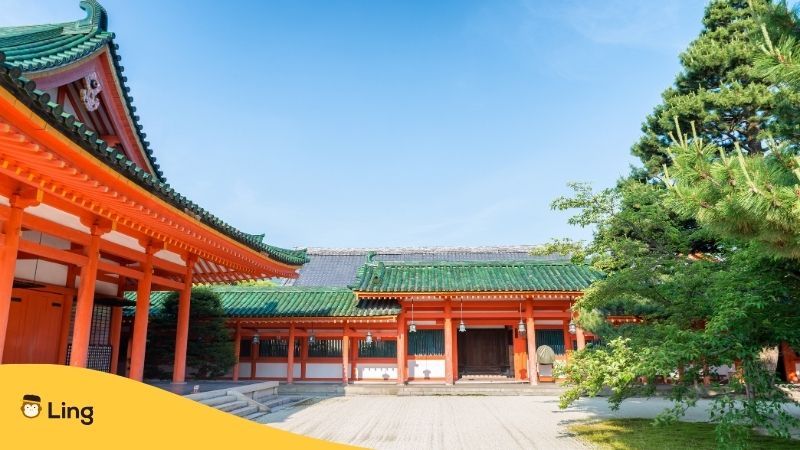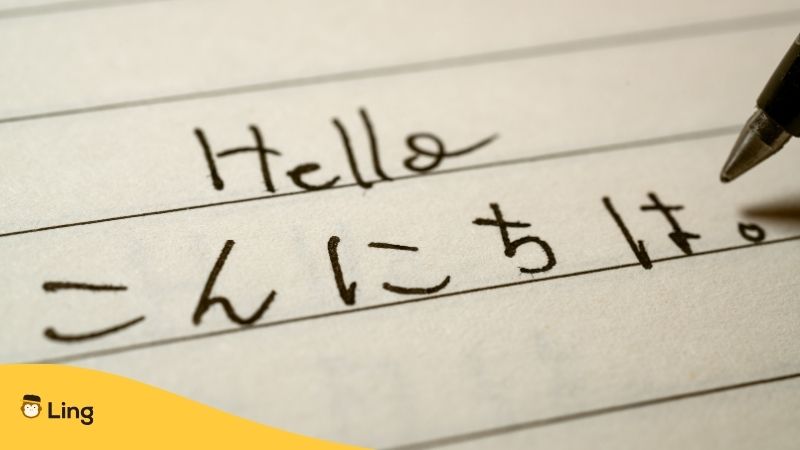So you wanna learn Japanese, eh? Well, before you dive into all those intricate kanji characters, let’s rewind back and tackle a key part of that journey first: understanding the history of Japanese language. Think about it, a language with three distinct writing systems mixed together? Trust me, the twists and turns in the Japanese culture have massively changed the language that we know and love today.
So whether you’re already memorizing katakana charts or just harbor a budding curiosity about Japan, this post is for you! Here, we’ll explore the Japanese language and its intriguing history to explain why it is as much of an art as a unique language! Let’s begin!
Table of Contents
History Of Japanese Language
Old Japanese (c. 710–794 AD)
What were the spoken languages in Japan before modern Japanese? Back in the day, the early Japanese realized they needed to start writing stuff down. But they didn’t have their own writing system. So what did they do? They borrowed one, of course!
At first, the aristocrats just used Classical Chinese characters since that was the cool kid writing style of the time. But slowly, they realized – wait a sec, our language sounds nothing like Chinese! Trying to write Japanese using Chinese characters is waaay too much effort!
So that’s when they cooked up what we now call “Man’yogana.” This was the OG phonetic writing invented specifically for Japanese sounds. They just took certain Chinese characters that sounded sorta close to Japanese syllables and assigned those as phonetic representations. Pretty clever, right?
Now Man’yogana worked okay, but it was still tricky and ambiguous. So simultaneously, some smart cookies created “Kanbun” – a way to use Chinese characters but match them directly to Japanese vocabulary words, no phonetic trickery.

Early Middle Japanese (c. 794-1185 AD)
Alright, after that rocky start, let’s fast-forward to when written Japanese really started coming into its own.
It was during the swanky Heian era when the royal court was starting to lead when it came to fashion, art, literature, and language! This is when Chinese started seeping heavily into the lexicon. The upper-crust nobles and monks brought back all sorts of Chinese vocabulary, phonology, and even more complex writing characters. Suddenly, it was tres chic to sprinkle Chinese into your Japanese writing!
But here’s the thing – only the social elites spoke and wrote like that. Out in the countryside, common folks were kickin’ it with their own raw provincial dialects. So, a huge gap emerged between the high-class written language and the way peasants actually talked. This set the stage for an eventual middle ground between stiff, formal Chinese-Japanese and loose rural slang.
Late Middle Japanese (c. 1185-1600 AD)
It was during this period when merchant ships started arriving on the Japanese shores from Portugal, Spain, England, and the Netherlands. And you know what they brought with them? A flood of new vocabulary words!
That’s right – as the Europeans and Japanese cautiously established trade relations, the Japanese language grew rapidly. Once Japan started incorporating these unfamiliar terms, their language transformed at the same time.
Early Modern Japanese (c. 1600-1853 AD)
For over 200 years, Japan became a full hermit kingdom. Well, mostly hermit! They did keep trade ties open with the Dutch. But otherwise, foreign influences got the boot! So, with no new loan words flooding in, the Japanese language turned inward and started standardizing into what we’d recognize as modern Japanese.
The biggest shift came as the capital and its dialect relocated from the Kansai region to Edo (present-day Tokyo). Suddenly, the way people spoke in Edo (today’s Tokyo dialect) carried a ton of prestige. Slowly but surely, this Edo dialect spread its influence nationwide to dominate over the Kansai folk’s way of talking.

Modern Japanese (1853 – Present)
With Japan rebuilding and reconnecting globally, English loan words started entering literally by the week as new innovations, products, and technologies arrived from overseas. Words like コンシール (konshiiru – “concealer” makeup), パソコン (pasokon – “personal computer”), and キャッシュカード (kyasshu kaado – “cash card”) became naturalized.
Combine these new additions with preexisting kanji, hiragana, etc., and you have the complex linguistic mashup we recognize as modern Nihonggo today!
Kanji
I know what you’re thinking – kanji?! The infamous Chinese characters that seem impossible to memorize and write? The cornerstone of the Japanese writing system that makes even seasoned language learners quake in their boots? Well, don’t freak out just yet! Let your pal explain the method behind the kanji madness.
See, way back when the Japanese realized that pilfering Chinese characters to mash up their own written language was, uh, kind of a messy hack, they streamlined things. Instead of just phonetic matching, they assign characters based on conceptual meaning. So, each kanji became associated with an idea or object rather than just its pronunciation.
This opened up a whole world of possibilities! By combining multiple kanji in sequence, the Japanese could build elaborate new terms that told mini-stories. For example, 电话 (where 电 means electricity and 话 means speak) forms the word for telephone.
Lucky for you, the Ling app has all the best ways to learn the Japanese language which fits in your hands. Download it now on the Play Store or App Store and find yourself immersed in this rich language!
Katakana
See, while hiragana emerged for women to write casual Japanes-y stuff, katakana came from dudes transcribing Buddhist mantras and documents using kanji fragments. So, it formed a ‘masculine’ shorthand style compared to Hiragana’s graceful curves. But by modern times, their gender roles flip-flopped in an ironic twist!
Today, katakana is used for recently imported loan words and foreign names that don’t have set kanji equivalents yet. So your McDonald’s and Beyoncé references get scribbled out in these stiff, mechanical katakana symbols. My theory – it’s the only way Japan can reconcile its love-hate relationship with outside influence!
Hiragana
They took symbols from kanji but simplified them into quick-flowing movements that mirrored cursive handwriting. Much lower barrier to entry! Today, it is critical for all those nitty gritty grammar bits that kanji can’t cover – endings, particles, plurals, verb tenses, all that. Anytime you need to twist and bend Japanese words to fit a certain context, you break out the hiragana arsenal!
Plus, knowing hiragana means you can now read phonetic pronunciations smoothing when kanji get too hairy. It really helps soften the complexity of the language once you embrace the hiragana flow.
Kana
Luckily, the Japanese have a handy catch-all term that lumps two of them together: Kana! Yep, kana just refers collectively to hiragana and katakana – the two phonetic alphabets used for spelling out words. Together, they’ve got almost 46 primary characters representing all the sounds needed to cover Japanese syllables.
Ready To Master The Japanese Language?
And there you have it – we’ve just traced the complete journey of the Japanese language! Now, I won’t pretend that mastering it will be a walk in the park. With three complex writing systems, it’ll definitely take some serious effort.
So, where to go from here if you wanna keep learning?
The good news is that you’ve got plenty of great resources right at your fingertips today! Gamified apps like the Ling app lets you build vocab on the go with advanced retention techniques. Give it a try now!



































































